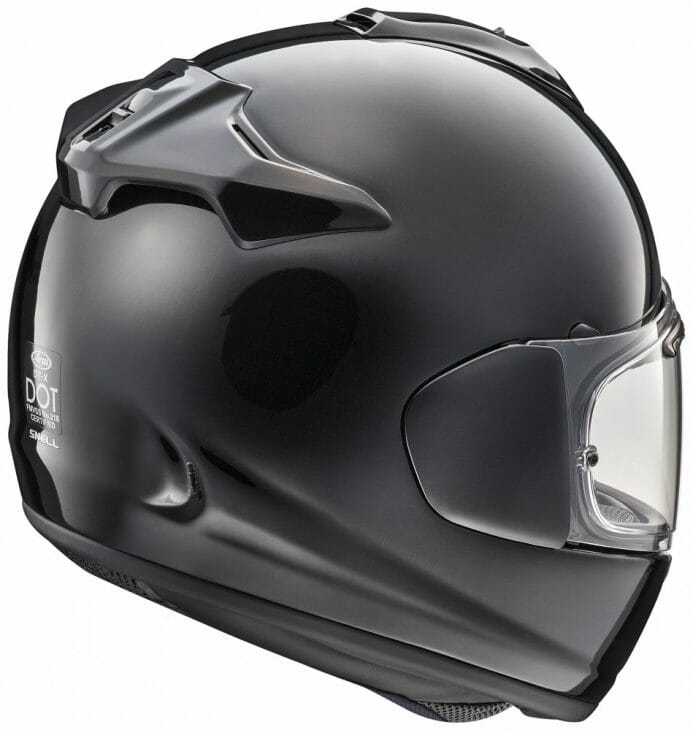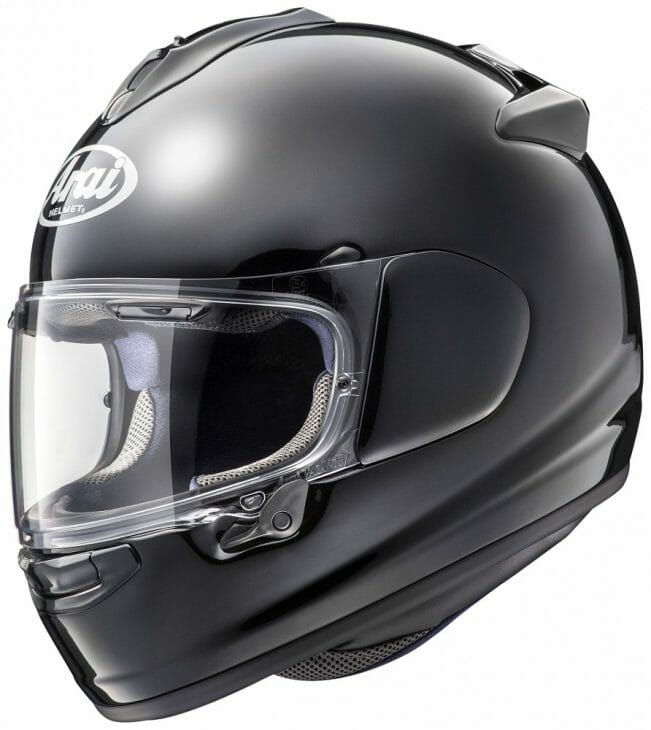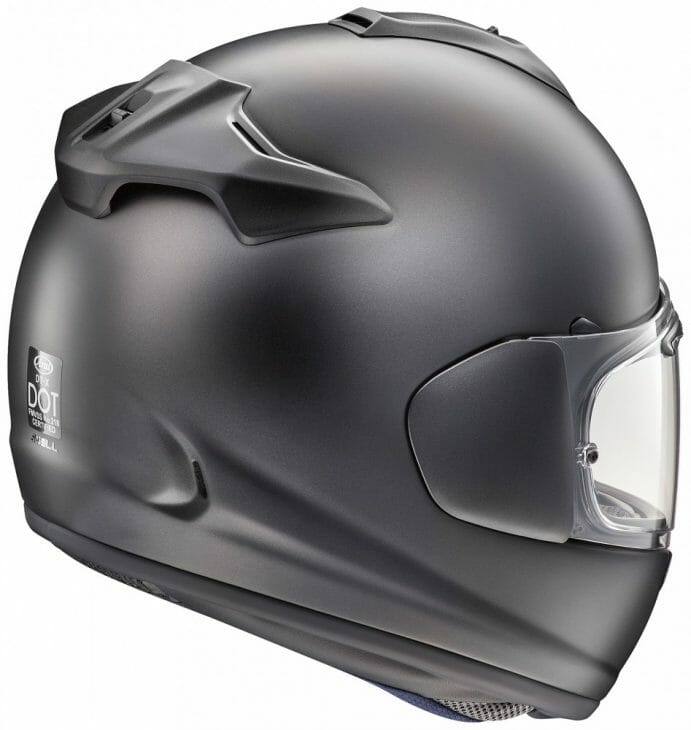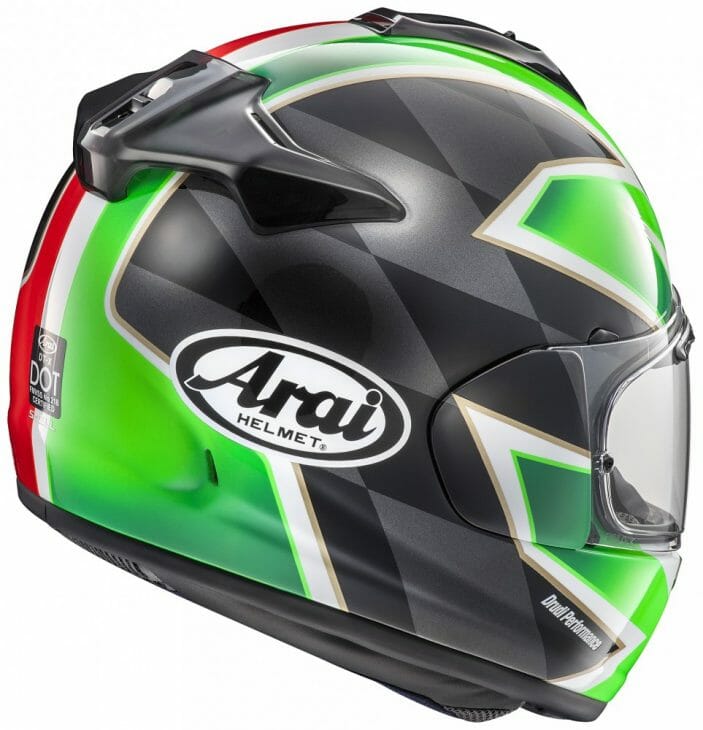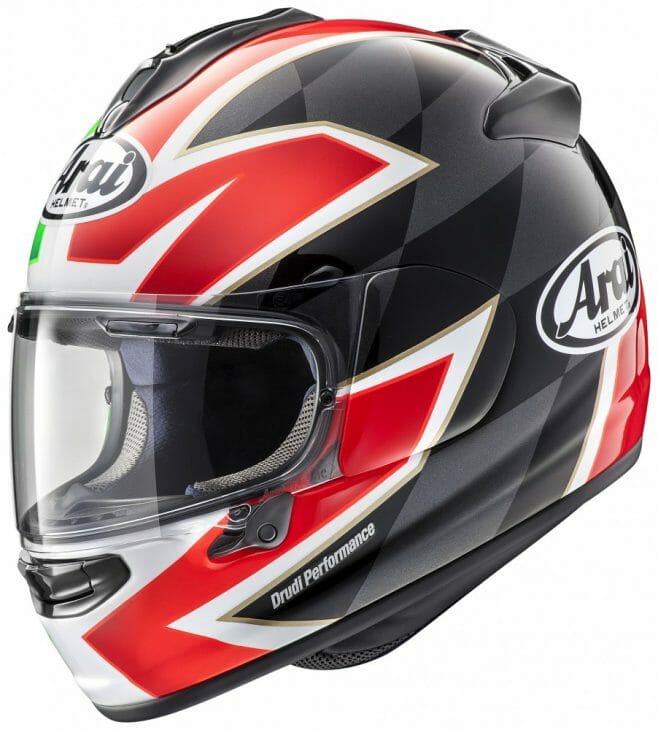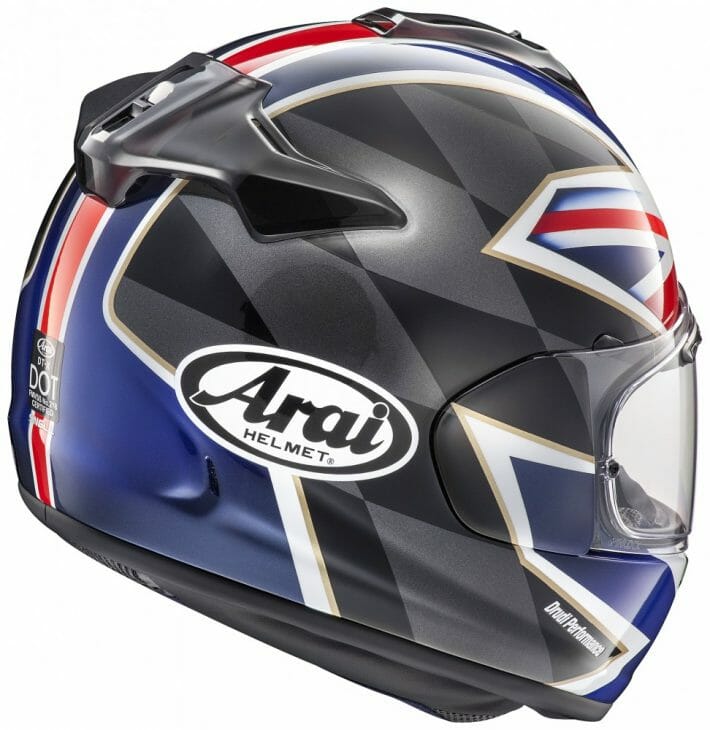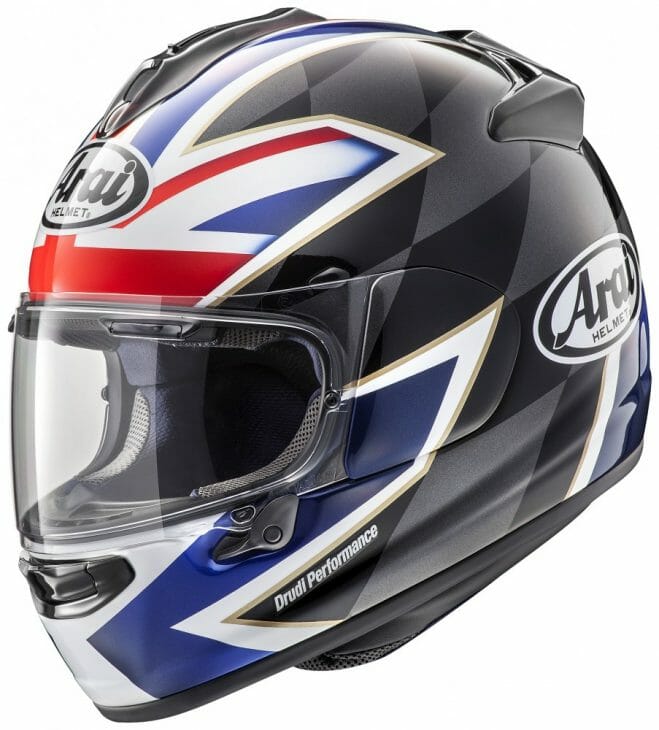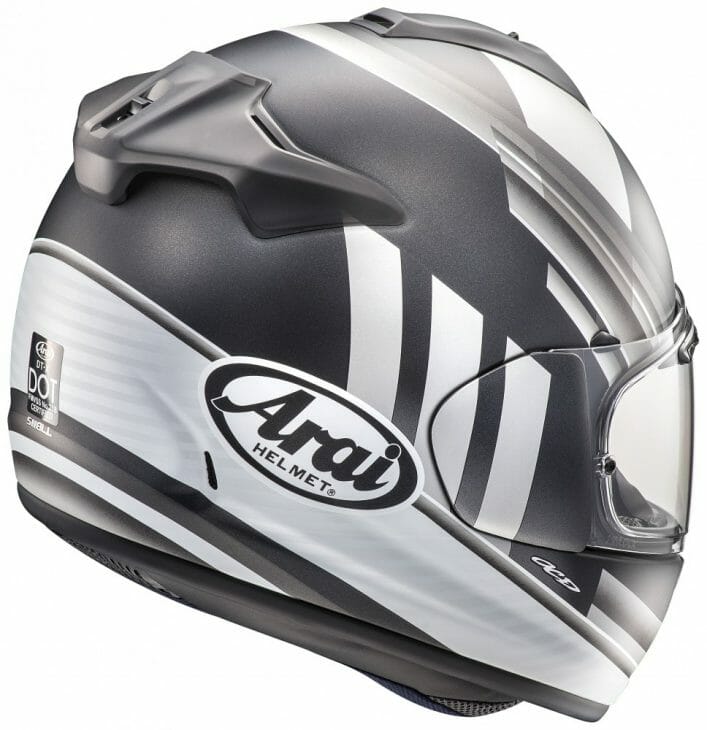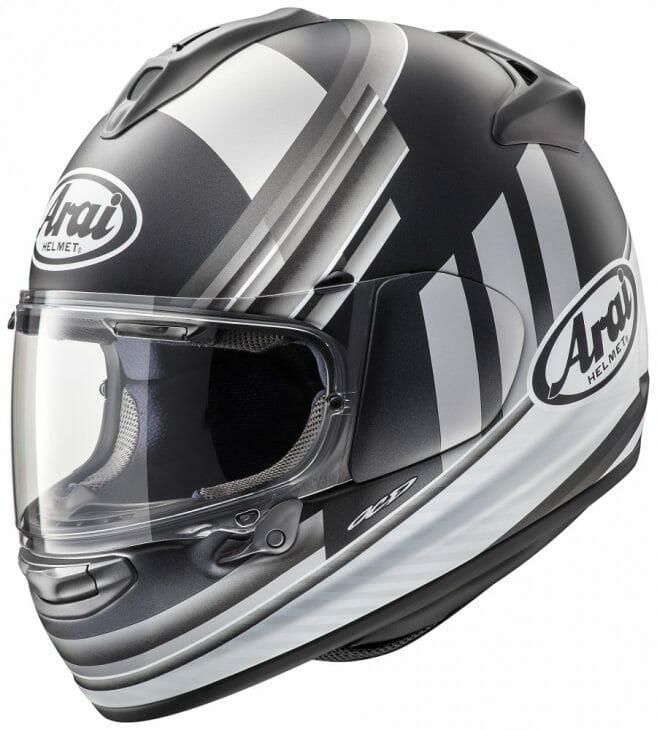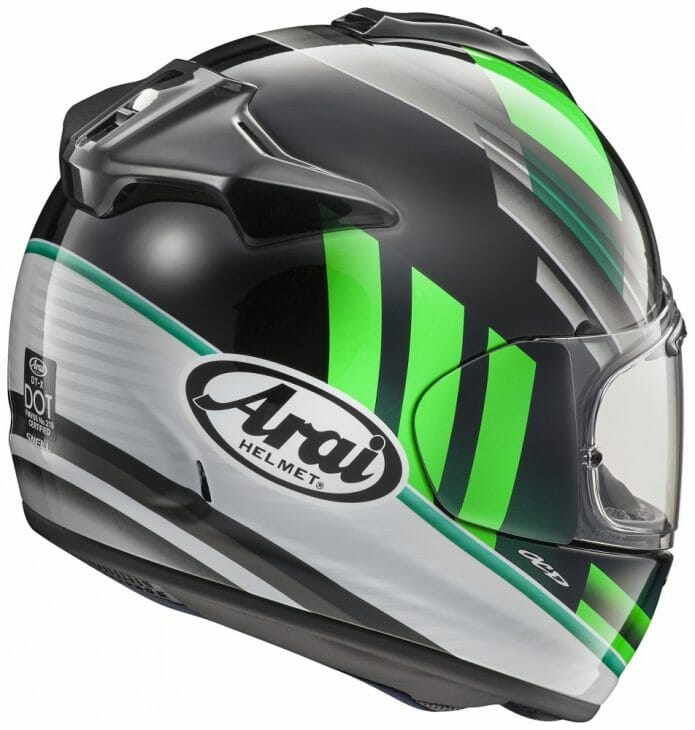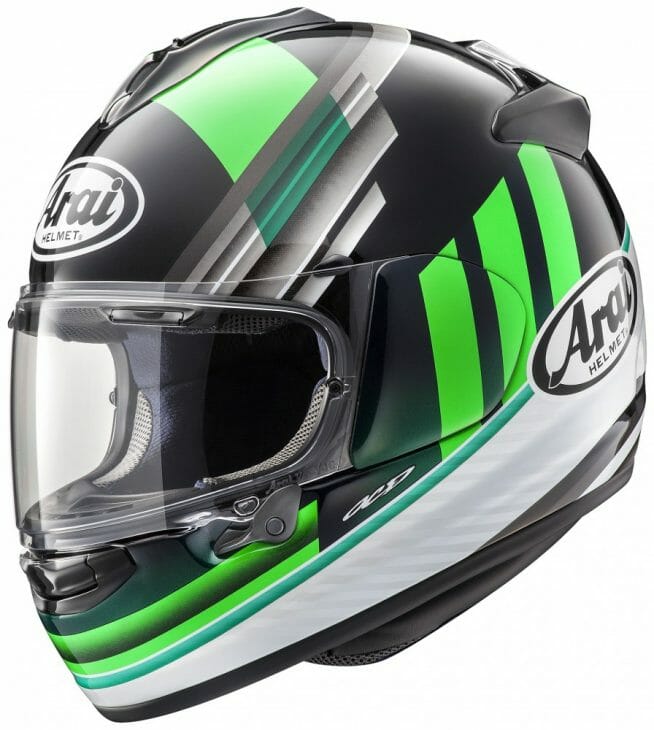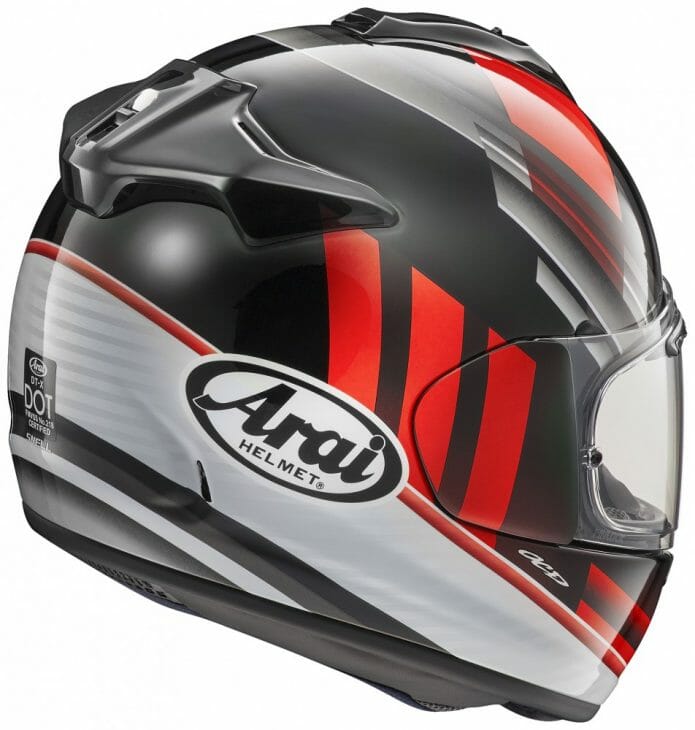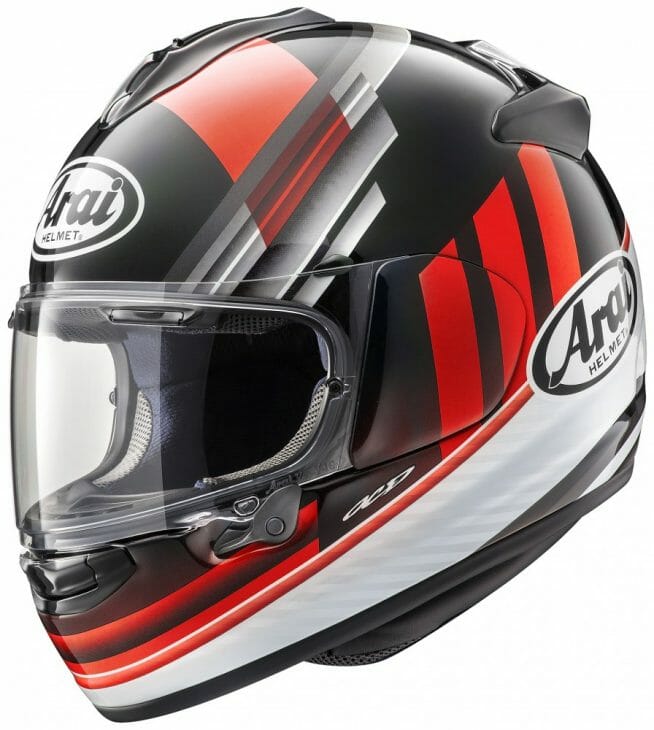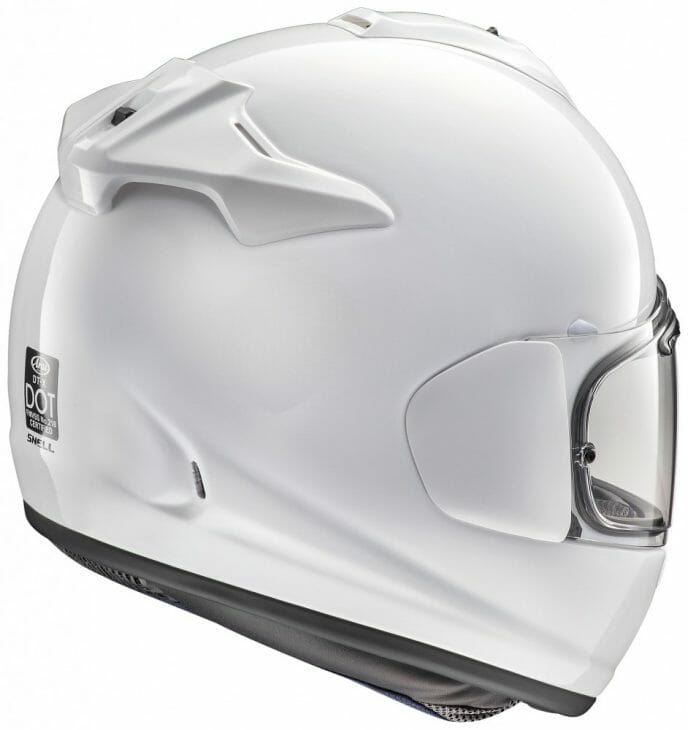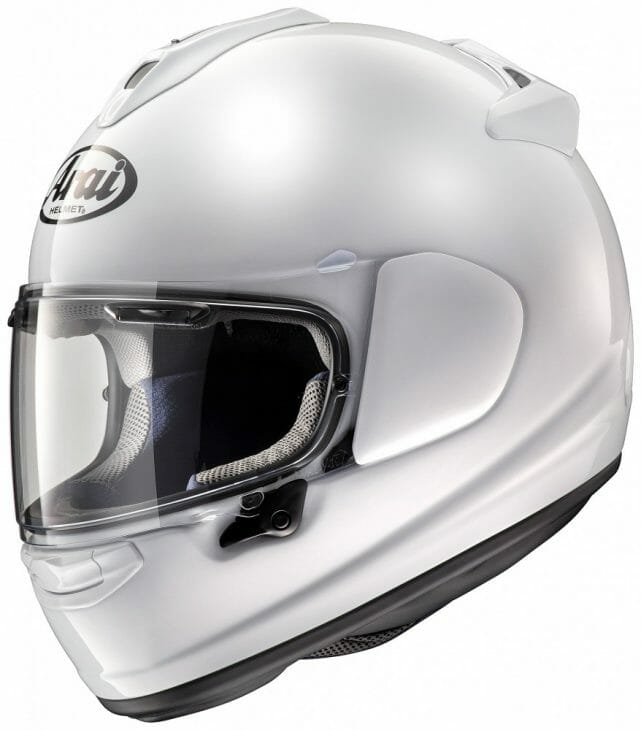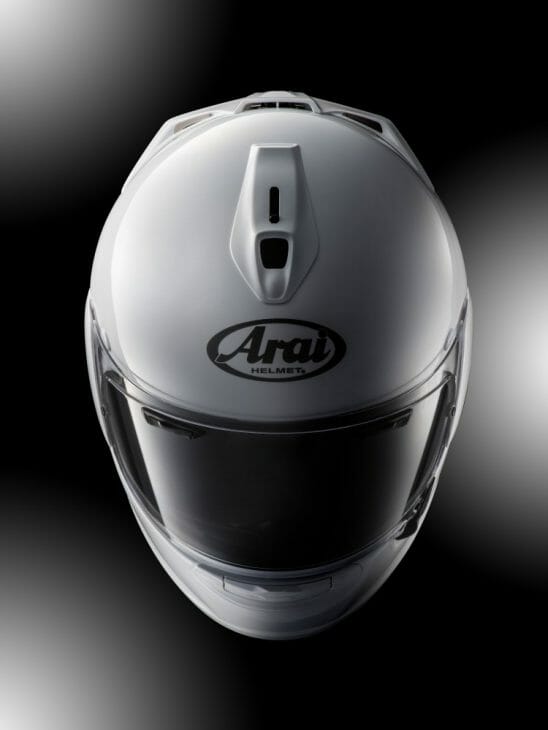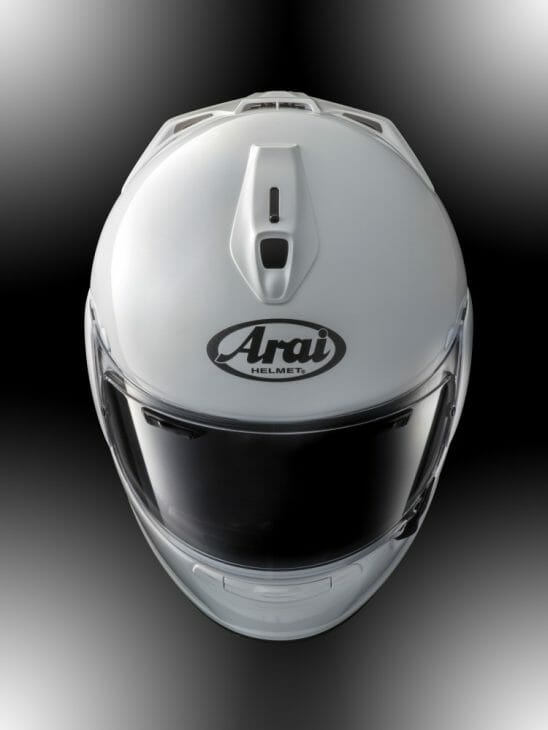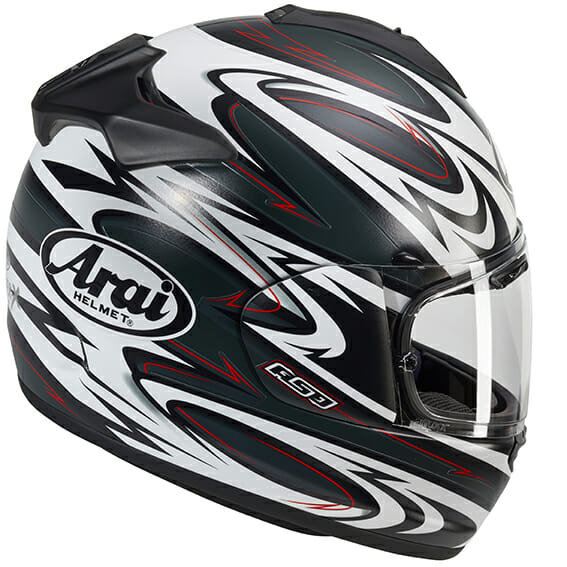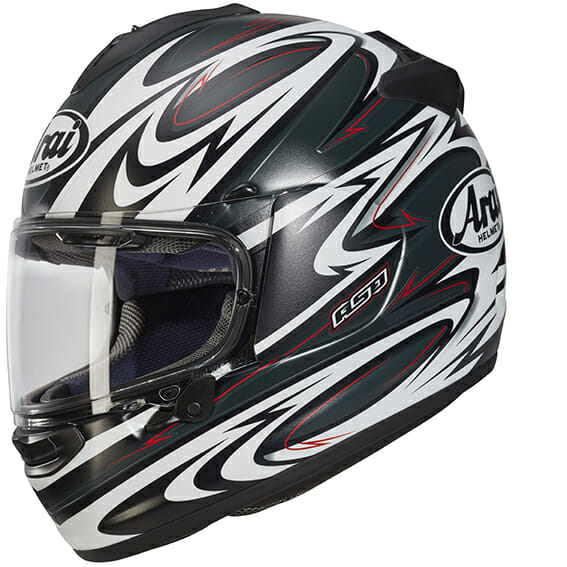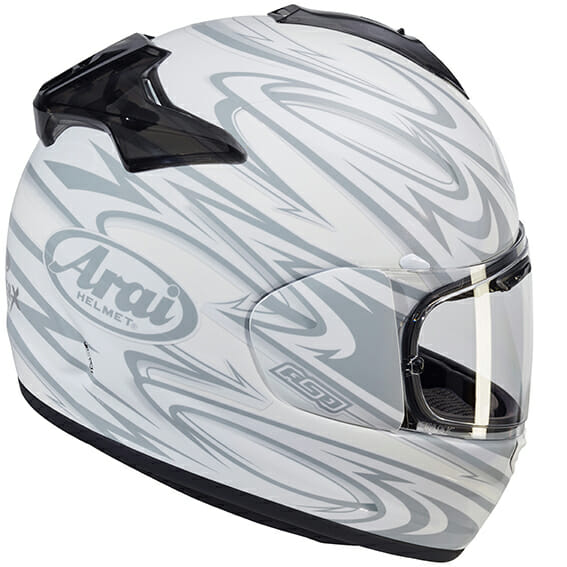Rennie Scaysbrook | July 27, 2017
Being a helmet manufacturer is hard going, these days. Now more than ever, there’s a massive array of brands, styles, and prices to choose from, so getting and keeping customers is a problem of increasing severity.
 Black helmets on a hot day are never a good idea. The DT-X flowed air well but not as well as something like a Corsair-X.
Black helmets on a hot day are never a good idea. The DT-X flowed air well but not as well as something like a Corsair-X.
On Arai’s U.S. website, there are 10 different styles of street helmet available to the rider, with the latest edition being this brand-new DT-X (meaning Down Town X) that sits above the Vector 2 but below the Signet-X, Quantum-X and the range topping Corsair-X (page 66).
Starting at $589.95 for solid colors, the DT-X is made using the PB-cLc (Peripheral Belt-complex Laminate construction) fiberglass shell compared to the higher spec (and more expensive) Corsair-X that uses the Peripheral Belting and Structural Net Composite2 shell. The DT-X gets seven vent holes in the shell—two above the forehead, three across the back of the crown and two at the back rear—although the comfort liner cannot be adjusted to suit different head shapes like the Corsair-X.
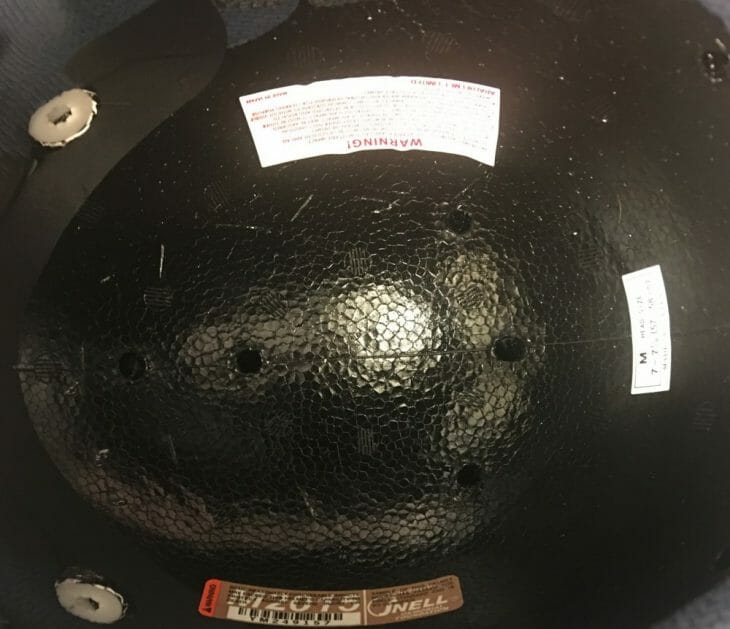 Here you can see the ventilation holes in the Arai DT-X’s interior.
Here you can see the ventilation holes in the Arai DT-X’s interior.
The DT-X runs the same vented VAS visor system as the Corsair-X and also comes with the ability to run the VAS Pro Shade System, which can give you both a clear and dark visor that is outside the EPS liner. That’s why Arai refuses to make a helmet with dual visors fitted into the design: their theory is if you have to make a compromise in the shell with internal visors, gears, mechanisms, etc., the helmet will have lost some of its structural integrity. The VAS Pro Shade is thus a more elegant solution to the problem of a helmet that can be used as easily at night as it can during the day without the need to change visors.
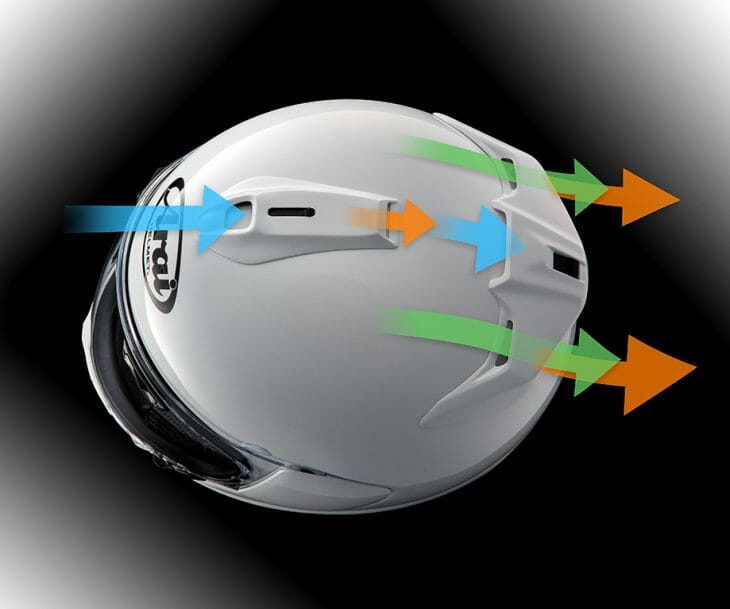 Vents from the outside.
Vents from the outside.
I’m not a huge fan of the system because the dark screen doesn’t come down far enough for me (I find having two totally different shades (dark and clear) in the same vision a little off putting), but lots of riders seem to agree with the system so I feel the addition of the VAS Pro Shade is a good thing for the DT-X, especially given it’s aimed primarily at the commuter rider.
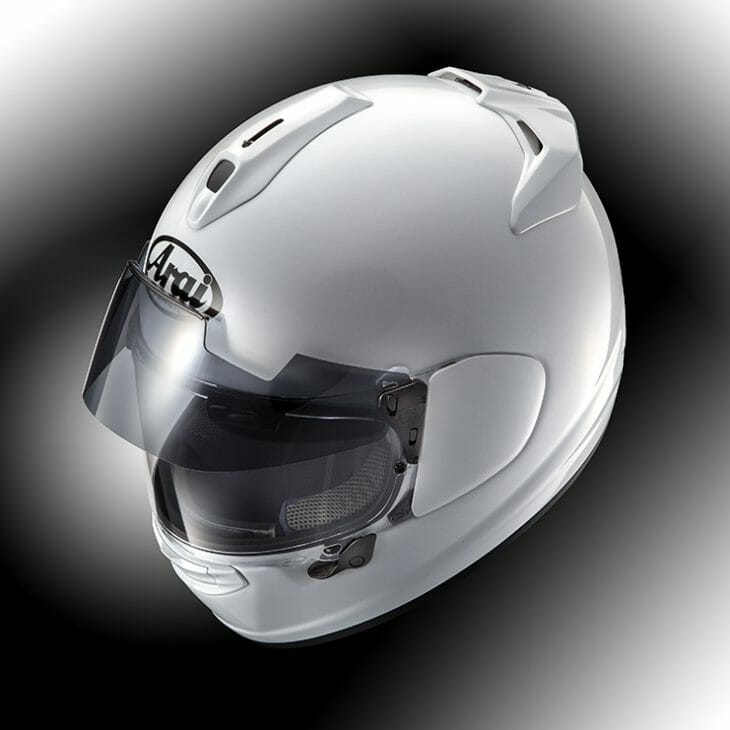 The Arai DT-X comes with the ability to fit the VAS Pro Shade system.
The Arai DT-X comes with the ability to fit the VAS Pro Shade system.
Airflow is one of the big differences between not just a top-line Corsair-X and this DT-X, but any helmet that varies largely in price from the same manufacturer. The shell construction is not that different, but the amount of air the helmet can flow is, as is the adjustability of the comfort liner.
On a hot day in Southern California, I spent about six hours in the DT-X and in the middle of the day found I was getting hot spots on the edges of my temples and at the top rear of my head. I put that down mainly to not being able to adjust the comfort liner at the crown (there are 5mm cut-outs on the side of the comfort liner and cheek pads for micro fitting). On a cool day I don’t think this would have bothered me so much, however, I’ve ridden all types of weather in my Corsair-X and never had this issue. I guess that’s what you get when you spend $350+ extra for a helmet.
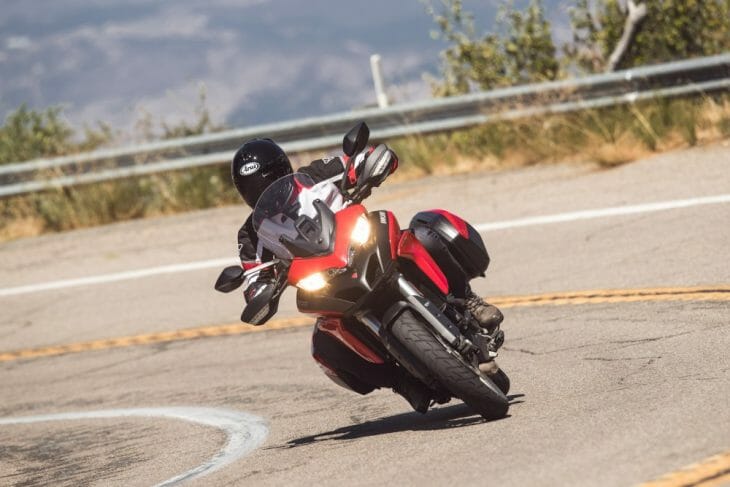 Long day comfort is good with the DT-X.
Long day comfort is good with the DT-X.
The fit of any helmet is the most personal aspect of motorcycle riding and me telling you this will be the best helmet for your head is complete nonsense. In my case, I have a round head which suits the egg shell shape of Arai’s multi-density EPS liner, so the DT-X suits me well. The only way you’ll know if an Arai DT-X works for you is if you try it on…
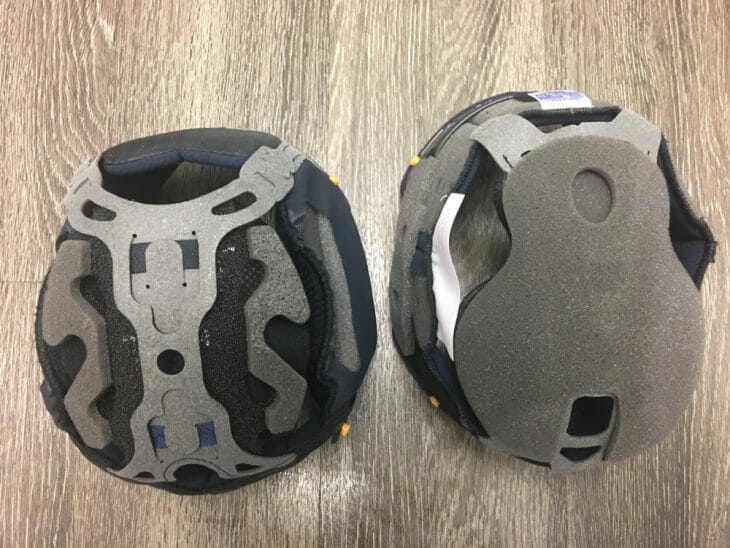 This gives you an idea of where your money goes when you buy a DT-X (right) compared to the Corsair-X (left).
This gives you an idea of where your money goes when you buy a DT-X (right) compared to the Corsair-X (left).
The fit has a big bearing on how noisy the helmet is. I find the subject of noise a moot point because I ride with earplugs, and cutting out the majority of the wind noise means the noise that actually matters (cars) can get through. As such, I find the DT-X is no louder than the Signet-X of the Corsair-X—the shell design is so similar across all three models I’d not expect a big increase in noise anyway. There’s plenty of vision available in the DT-X—the wide eye port means peripheral vision is never inhibited, making side glancing for lane splitting easy.
At $589.95 for the black model tested here, the DT-X represents good value and a way for customers to get into the Arai brand without forking out over $900 for a Corsair-X.